Over the weekend as I was searching in my quest to find monarch eggs or caterpillars on my common, swamp and butterfly weed milkweed, I came across a stunning sight.
A spectacular set of vibrant, colorful wings of an Eastern Tiger Swallowtail was seen easily as she drank from my flowers. The Eastern Tiger Swallowtail has stripes like a tiger. The females have multiple iridescent blue spots on their hind wings and tails. Eastern Tiger Swallowtails are the second largest butterfly behind the Giant Swallowtail. The wingspan of the Eastern Tiger is 5″- 6″. You can’t miss these large vivid picturesque butterflies. A treat for the eyes.
Swallowtail butterflies are the second most recognizable butterfly behind the regal monarch and are plentiful in the United States.
I’ve been seeing an abundance of these tiger swallowtails in my yard this summer. It is a treat as I watch them fly around my head so closely. They’re less afraid to be around people than other butterflies.
The male Eastern Tiger Swallowtail does not possess the numerous blue spots on their hind legs nor have any on their tails. Below are pictures I’ve taken of a male. Females also have orange spots on their wings where the males do not.
This video was shot in my yard as a male Eastern Tiger Swallowtail attempts to mate with a female.
https://www.facebook.com/tinaevangelistaeppenstein/videos/10223721944300336/
Six Fun Fascinating Facts about the Eastern Tiger Swallowtail
1. Here are three species of tiger swallowtails in addition to the Eastern. Pictured from left to right : Appalachian, Canadian and Western Tiger Swallowtails. 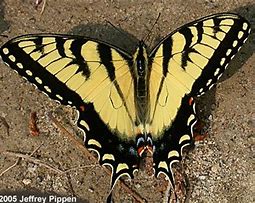
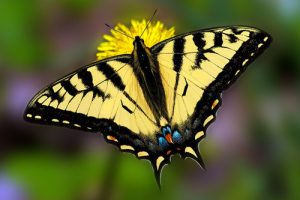
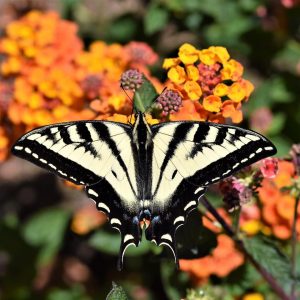
They are so similar in appearance to the Eastern Tiger Swallowtail and can get easily confused. But when you look closely, you can see the differences.
2.. They only live for one month. From egg to end of their lives is a short two months. A short life for one of the most brilliantly colored butterflies.
3. Tiger swallowtails engage in an activity called puddling which is a behavior the swallowtails engage in when on the search for something they can’t find in flowers- salt/sodium and minerals. They feed on dung, mud, fermenting fruit, urine and carrion. Males typically are involved in puddling which provides a unique nutrient that is found in their sperm and can inject into the female when mating. This added nutrient helps the new eggs to grow into stronger butterflies. 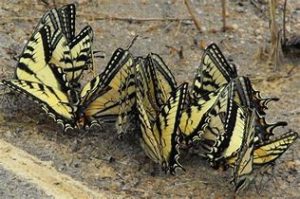
4. Swallowtails in the egg stage resemble bird droppings. It’s a great disguise to keep predators away. Don’t you think? When they are in the caterpillar stage, they have two spots that resemble eyes which gives the look of a snake. A great way to fend off their attackers. They look real!
5. When swallowtails feel threatened, they stick out their osmeterium, a bright red-colored defensive organ found only in the caterpillar stage. When facing a threat by a predator, this structure gives off a pungent odor to get rid of the predator. The osmeterium completes their disguise of appearing like a snake with a forked tongue and “eye spots.”
6. Female eastern swallowtails can be yellow or dark colored. While my yard has been full of females, I’ve seen a dark-colored female drinking from my plants. They look so similar to Black Swallowtails. Males are much less interested in mating with them. Still, I find the dark colored females just as beautiful. This doesn’t happen with the males. Whether yellow or black, the beauty of the Eastern Tiger Swallowtails floating around your yard can’t be denied.
Tina Evangelista-Eppenstein is a television talk show host, speaker, writer, and an unabashed animal advocate. Her love for animals and quest for the hard truth is what drives her passion for all things animals. She hosts the television show, “A Close Up Look at Animal Welfare Issues.” She adores her tripawd, Brody, who was a formerly abused pup who lost his leg because of cruelty inflicted upon him. If you’d like Tina to talk to your group or have a story, please email her at tevangelistaepp@yahoo.com. Like https:www.facebook.com/ACloseUpLookatAnimalWelfareIssues and be sure to check out AnimalWelfareIssues.com.

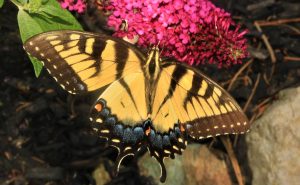
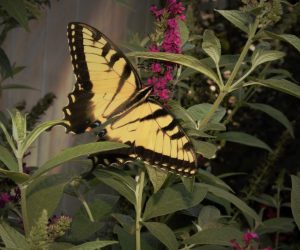
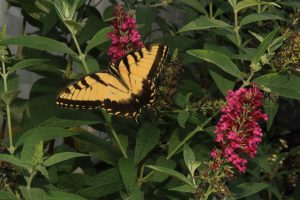
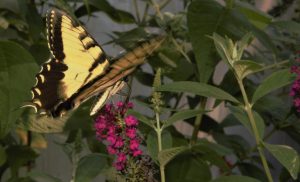
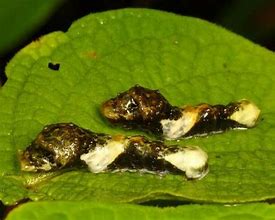
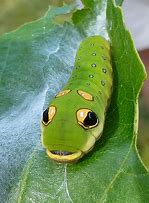
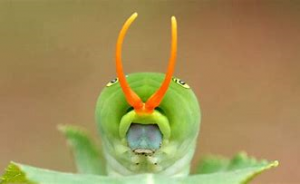
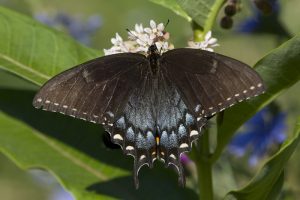
Wow great information. Interesting facts. Your photos are so vivid and clear. Keep up the good work with your butterflies.
I find butterflies to be fascinating in general. I enjoy taking photos of them. It takes quite a few pictures to capture the best and clearest ones. I’m trying to help the monarchs and other butterflies. It’s a small role but hoping it’s significant for them.
Thanks!